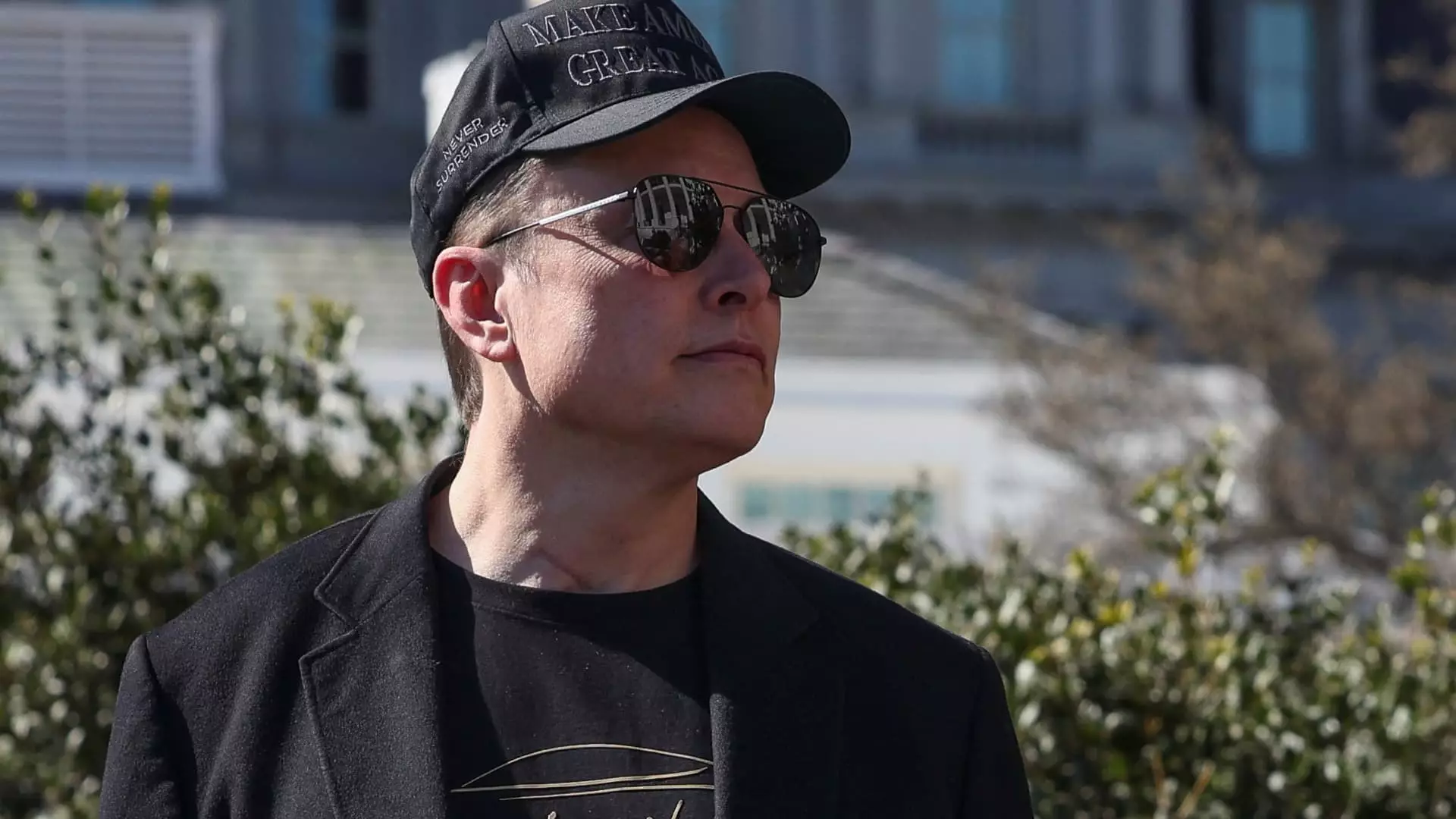Electric vehicle juggernaut Tesla has taken a sharp nosedive, and the implications aren’t just about missed earnings. The company’s recent first-quarter earnings report has opened the gates to a broader discussion surrounding corporate governance, strategic planning, and economic realities in America. As automotive revenues plummeted by 20% compared to a year prior, there’s more than just numbers at play. The underlying issues in Tesla’s leadership, execution, and market adaptability herald a significant crisis that cannot be overlooked.
The Worrying Decline in Revenue
Tesla’s reported earnings per share of 27 cents fell short of expectations, which stood at 39 cents. Revenue of $19.34 billion underwhelmed compared to the anticipated $21.11 billion, marking a hefty 9% decline from $21.3 billion in the same quarter last year. More troubling was the fact that automotive revenue, Tesla’s bread and butter, slid a staggering 20%, plummeting from $17.4 billion to $14 billion. This downturn reflects not only the immediate impacts of supply chain challenges but also a worrying inability to maintain market leadership or even notably defend its share against intensifying low-cost competition, especially from China.
The decline in revenue signifies deeper issues at Tesla. Instead of merely viewing these numbers as a temporary setback, one should recognize them as a symptom of a more systemic crisis—leadership vision appears clouded and aims seem misaligned with market realities. The company’s continued assurance that the Model Y’s refreshed version is on the horizon underscores a troubling over-reliance on single product lines and stalled innovation.
Leadership Missteps and Political Distraction
CEO Elon Musk has been caught up in political machinations, spending substantial time in the circles of power rather than focusing on the company’s strategic direction. His involvement in the Trump administration’s agenda has raised eyebrows, with many questioning whether these commitments detract from Tesla’s operational priorities. The reported 71% dive in net income—from a robust $1.39 billion last year to a meager $409 million—cannot simply be chalked up to external factors. This is a significant indicator of lackluster decision-making at the executive level.
Furthermore, Musk’s alliance with the far-right AfD party in Germany has also stirred public relations concerns and might be driving a wedge between the brand and its customer base. When a company’s leadership becomes entangled in divisive politics, the fallout can be severe, affecting everything from consumer trust to employee morale. The hesitation to commit to growth targets for 2025 signals a lack of confidence in leadership’s capability to navigate future challenges effectively.
Stock Market Repercussions: A Loss of Investor Faith
It is evident that investor sentiment is shifting, as Tesla’s stock has plummeted by 41% so far in 2025. While there was a slight bounce-back after President Trump’s assurance regarding Federal Reserve Chair Jerome Powell, such reactions feel more like the desperate flailing of hope rather than a robust recovery plan. The stock’s worst quarterly drop since 2022 underscores a profound lack of faith in Tesla’s management and the viability of its ambitious, yet fragile, frameworks for future expansion.
Tesla’s confident commitment to rolling out a driverless ride-hailing service in Austin, Texas, highlights a significant juxtaposition. On the one hand, the firm touts groundbreaking innovations; on the other, it grapples with providing consistent value amid shifting regulations and supply chain pressures. If the company wishes to regain that trust, it may need to focus less on political charades and more on solidifying its operational foundation.
Cost Pressures and Competitive Landscape
Rising costs for manufacturing components, worsened by policies centered on tariffs, are causing alarm bells for Tesla. Concerns around essential materials and part supply are compounded by the introduction of lower-cost competitors that are consistently winning over the price-sensitive consumer market. Of particular note is the ongoing battle in China, where Tesla’s offering feels increasingly outdated against more agile newcomers equipped to meet the evolving desires of the modern consumer.
Despite optimistic projections in the energy generation and storage sectors—where revenue climbed an impressive 67%—it is the automotive side of the business that defines Tesla’s identity. The forecast that international supply chains and political climates may further destabilize sales should serve as a stark warning. The underlying message is clear: to continue being a market leader, Tesla must rethink its navigation strategy in the tumultuous landscape, especially as traditional automotive players and disruptive startups alike are snapping at its heels.
While Tesla may still hold sway over the electric vehicle market, its trajectory is increasingly engineered by external forces—in governance, market dynamics, and consumer perceptions. The company now finds itself facing existential challenges that are deeply rooted in its leadership choices and operational performance.

